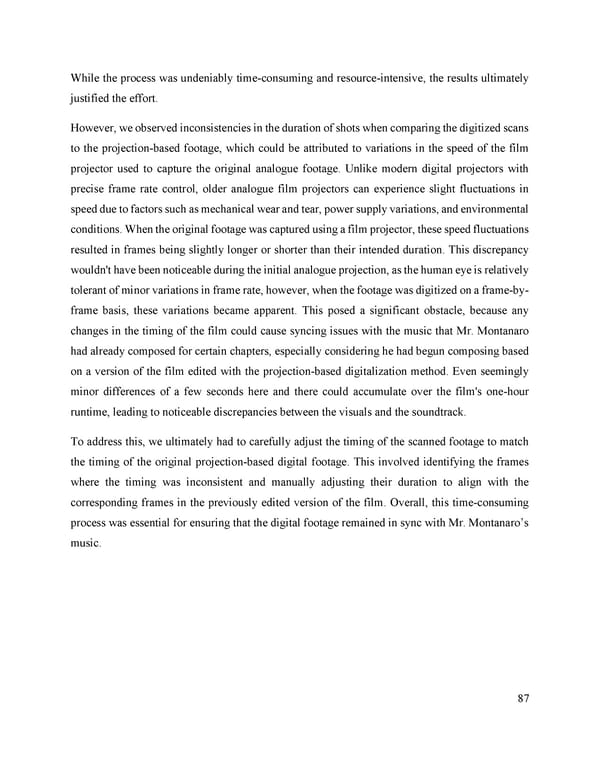While the process was undeniably time-consuming and resource-intensive, the results ultimately justified the effort. However, we observed inconsistencies in the duration of shots when comparing the digitized scans to the projection-based footage, which could be attributed to variations in the speed of the film projector used to capture the original analogue footage. Unlike modern digital projectors with precise frame rate control, older analogue film projectors can experience slight fluctuations in speed due to factors such as mechanical wear and tear, power supply variations, and environmental conditions. When the original footage was captured using a film projector, these speed fluctuations resulted in frames being slightly longer or shorter than their intended duration. This discrepancy wouldn't have been noticeable during the initial analogue projection, as the human eye is relatively tolerant of minor variations in frame rate, however, when the footage was digitized on a frame-by- frame basis, these variations became apparent. This posed a significant obstacle, because any changes in the timing of the film could cause syncing issues with the music that Mr. Montanaro had already composed for certain chapters, especially considering he had begun composing based on a version of the film edited with the projection-based digitalization method. Even seemingly minor differences of a few seconds here and there could accumulate over the film's one-hour runtime, leading to noticeable discrepancies between the visuals and the soundtrack. To address this, we ultimately had to carefully adjust the timing of the scanned footage to match the timing of the original projection-based digital footage. This involved identifying the frames where the timing was inconsistent and manually adjusting their duration to align with the corresponding frames in the previously edited version of the film. Overall, this time-consuming process was essential for ensuring that the digital footage remained in sync with Mr. Montanaro’s music. 87
 Lost Analogue: Exploring Film, Music, and Interdisciplinary Methods in Education Page 87 Page 89
Lost Analogue: Exploring Film, Music, and Interdisciplinary Methods in Education Page 87 Page 89